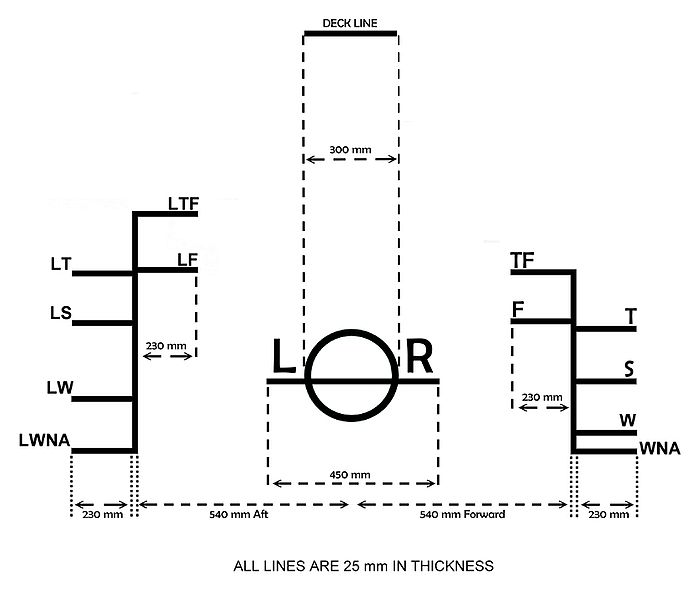Believe it or not, the markings on the side of commercial ships are not just there for decorative purposes. All of the ship markings have a purpose, and many of them help to identify the vessel and its capabilities. Without that information, it would become difficult to determine how much fuel a ship needs to follow nautical charts and reach their desired port. This post will provide you with some information about ship markings in the hope of setting the record straight and improving your understanding.
Identification information
When you look at the stern of most commercial ships; you should see some identification information that helps to distinguish the vessel from other boats in the dock. The identification info tends to include:
- The name of the person or company who owns the ship.
- The name that was given to the ship when it launched.
- The flag the ship sails under (bear in mind that a significant percentage of ships do not sail under their country’s flag these days.)
- The International Maritime Organization number for the vessel
Maximum load markings
You should also notice ship markings that let you know about the maximum loads it can carry. We’ll publish a key below to help you understand that. Some ships have markers that let you know if the vessel is overloaded too.
- There are circles with lines through them near the bottom of the ship. When those circles disappear under the water; it means the boat is carrying too much weight.
- At the side of the circles; you should see some letters that let you know about how much weight the ship can carry in different climates. The key for that is as follows:
- TF means tropical fresh water.
- F means freshwater.
- T means tropical seawater.
- S means summer temperature water.
- W means winter temperature water.
Bow thruster markings
Bow thrusters help commercial ships to move sideways, and manufacturers and owners will place markings on the vessel to let others know the boat has those capabilities. In most instances, the sign for a bow thruster is a white circle with an X on the inside. In some cases, the position of the bow thruster will also require markings to determine between the ballast tank and the forepeak.
Other markings
Alongside the markings mentioned in this post; you might see some other images and figures on the side of commercial ships. They include:
- Markings for a bulbous bow = a white symbol that looks like the number 5 without the top line.
- Draft marks = Numbers in a vertical line on both sides of the vessel.
- Safe working load = White arrows pointing in the direction of the bitts.
- Pilot boarding mark = A white rectangle with a yellow border.
Now you know how to read some of the most common markings you will find on commercial ships; you should have a better understanding of the capabilities of the vessels and their load potentials. Captains have to consider weight as a factor when planning their journeys and following nautical charts because that is the only way to work out how much fuel they require and how long it will take them to reach their destinations.

